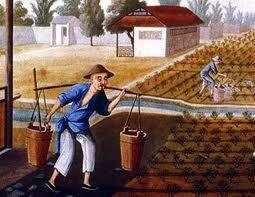The Slaves That Gave the English Their Cuppa
Here’s some history – kidnapping and slave labour in Muslim Philippines to satisfy English demand for tea.

Whenever I crave for Xinjiang noodles and Chinese tea, I would go to a restaurant nearby my apartment here in China. The restaurant is being managed by enterprising Chinese Muslims. Just like in the Philippines, there are many enterprising Muslims in China. Though I’m a Christian, I love to interact with different peoples of faith, especially with Muslims. Honestly, I find halal meals as nutritious and delicious but without my Chinese Muslims friends knowing, whenever I eat Xinjiang noodles and sip Chinese tea in their restaurant, I can’t help but think of one inconvenient historical truth – thousands of Filipino Muslims had become slaves once upon a time because of Chinese tea and British imperialism.
Go Bon Juan, Filipino scholar on Filipino-Chinese history wrote a few years back in Manila Times that Chinese tea helped foster slave trade in the Philippines hundreds of years ago. Juan, citing Prof. James Warren’s “In The Global Economy and the Sulu Zone”, pointed out an interesting interconnection of the flourishing slave trade in Sulu, Philippines and the commerce in tea between China and England in the 18th to 19th centuries.
At the start of the 18th century, Chinese tea was in great demand in Europe. The English consumed an average of two and a half pounds of tea a month. In 1801 England had spent 2 million pounds on imported Chinese tea. The British East India Company exported Indian cotton and cloth worth 27 million pounds, but it was not enough to compensate for the trade imbalance caused by the huge tea import.
To rectify matters, England looked towards Sulu in the Philippines – especially its sea and forest products – to obtain goods for export to China. These included sea cucumber, bird’s nests, wax, camphor, pearls and tortoise shells, products that Imperial China consider as exotic and luxurious. Sulu’s sea cucumber and bird’s nests became England’s major export to China to pay for its importation of Chinese tea.
Whenever I think of the historical relation of tea, opium, slavery, and imperialism, I sometimes have trouble enjoying my cup of Chinese tea.
However, in order to supply England’s huge demand for these products, the Sulu sultan needed a large labour force, which was not easy to come by, especially since the harvest of sea cucumber and birds’ nests was a dangerous occupation. The sultan’s solution: slave labour.
The sultanate of Sulu embarked on the kidnapping of slaves that covered not just Sulu and the surrounding areas in Mindanao’s northern coastal areas but also the coastal areas in the Visayas and Luzon. It reached farther areas along the coasts of Borneo, Celebes, Java, Sumatra and the Malay Peninsula. For a hundred years from 1770 to 1879, the sultan of Sulu must have kidnapped 20,000 to 30,000 slaves.
The sultanate of Sulu used the slaves they had kidnapped to provide the delicacies to the British East India Company, which in turn sold China’s silk, porcelain, gunpowder and arms to the sultan. On both sides of the exchange, the British earned a lot merely by acting as broker. The arms and gunpowder, especially, was what the sultan used to capture more slaves. Later on, the British export of opium from India to China was also spurred by the need to balance the foreign trade deficit resulting from the huge import of tea.
Whenever I think of the historical relation of tea, opium, slavery and imperialism, I sometimes have trouble enjoying my cup of Chinese tea.
This post was first published on The Pro-Pinoy Project in June 2011.

















